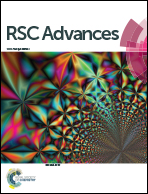Boroaluminosilicate geopolymers: role of NaOH concentration and curing temperature
Abstract
In the present paper, effects of concentration of sodium hydroxide solution (NaOH) and curing temperature on properties of boroaluminosilicate fly ash-based geopolymers are studied. Geopolymers, cement-free eco-friendly construction materials, are formed by alkali activation of an aluminosilicate source. By changing the alkali activator from a silica-rich to boron-rich one, it may be possible to have boroaluminosilicate binders. Results obtained indicated formation of B–O bonds in these types of geopolymers. Increasing NaOH concentration was observed to reduce compressive strength due to changes occurring in the nature of reactions between the alkali activator and fly ash particles. Establishment of unwanted complex compounds as well as formation of non-stoichiometric aluminosilicate binders instead of boroaluminosilicate ones were supposed to be the main reasons for this strength reduction. Additionally, curing temperature had a strong effect on the formation of new phases. Various microstructures were observed in boroaluminosilicate binders, where the presence of needle-like crystals was the main difference between these types of geopolymers and the aluminosilicate one.


 Please wait while we load your content...
Please wait while we load your content...